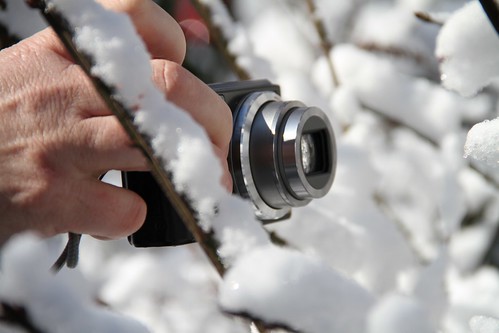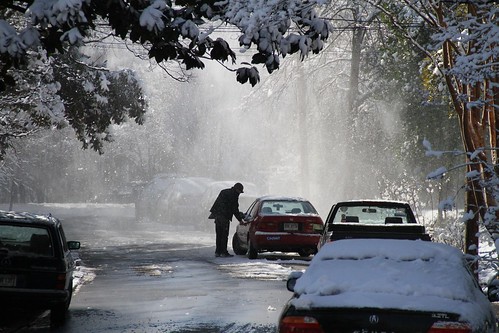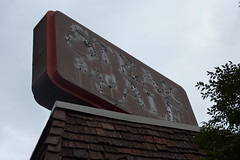Pampas Cat.
Friday, May 21st, 2010

Although I admire the developers who see algorithms painted, floating in mid-air everywhere they go, I am most certainly not one of those people. And yet I’m interested in the tech behind the apparent seamless experiences, and I have a sense of the powerful frameworks that spin together to create a user experience that is as visually smooth as it is powerful.
This is a (fragmentary) book review of a book I received on the doorstep (dead trees!) an hour ago. I’ve gone through maybe a dozen pages. I’m already in rapt admiration. This is a great approach for people like me. Apple developer/aesthete Scott Stevenson realizes (I’m paraphrasing from his introduction) that there are hard-core coders who bleed zeroes and ones, and then folks like me, designers who want to understand how to make the underpinnings serve their vision.
So he wrote Cocoa and Objective-C: Up and Running: Foundations of Mac, iPhone, and iPod touch programming, and so far, it’s filled so many of the gaps in for me in the mysteries of the C language, Objective-C, built on C, and Cocoa, the massive framework collection built on Objective-C. See? More clarity already.
April in a nutshell.
Thursday, April 29th, 2010
Things have been, well, pretty close to the ‘normal’ baseline here at casa positively atlanta georgia through the month of April. I looked up and noticed that I hadn’t added to this fine collection of journal entries since the getting an iPad and enjoying it in the backyard post. So what’s been happening? Okay, in 10 seconds: Convivial meals with family and friends. Birthday fun. Hike in the north Georgia mountains with neighbors. Wandering through the Atlanta Dogwood Festival. Opening up and adding new RAM and storage to a Mac Mini from Seattle. Lots of rendering animation at 1920×1080 (that’d be HD 1080i to you.) helping a friend get a new water pump so she could return safely to Lexington, KY. And…more settling in with that semi-magical iPad device.
Writing amidst birds on a glare-y morning.
Monday, April 5th, 2010

I decided to start the morning out in the back yard with a cup of coffee and that device that I’ve been, well, anticipating seems like such an insufficiency…shall we say salivating over? Really, really wanting to get my hands on? That’s more in the ballpark.
As a specialized device, as opposed to a “replacement” for a laptop or netbook or phone, the iPad is wonderful and indeed gives me that same sense I had after I dragged the first Macintosh home. This is new, different, and it may not have all the answers now, but it certainly can serve as the container for those answers when placed out there in a healthy stream of developer creativity, a modern marketplace for digital ideas. And as you may have read, there’s some question as to whether the Apple-controlled system of app development and approval—give them $99 a year to be allowed to put stuff out there, and then only distribute your apps as approved chunks of binary through Apple’s own store, interface, and forbearance—is open enough, and for me, the jury is less out on that than it is on the question of being able to get your stuff in and out of the machine with (as the modern dev kids like to say) as little friction as possible. It took quite a while for my desktop machine to manipulate the thousand or so JPEGs i wanted in our photo library before it was willing to slide them over…and that felt like a lot of friction to me.
And then there’s the whole question of this fine, high-resolution led-backlit screen and whether this is indeed superior to, say, the Kindle’s approach that uses something fancily called ‘e-ink’ but basically is just a low power display that can be read out in glorious black and white in the bright glare of sunlight.
Which brings me back to this beautiful Atlanta spring morning, out in our back yard.
Serenaded by every bird sound effect on our yard’s library, invigorated by the smell of morning coffee mixed with flowers in bloom, I was able to read the morning’s news with the tablet perched in my lap, but when the time came to bat out these few paragraphs painlessly on this new device, well, the batting was painless (the onscreen keyboard supports my high speed hunting and pecking well), but the visual it presented was less than crystal clear. In order to type comfortably, I have to put the device down on our backyard table, and as the angle of pad surface to sky becomes more perpendicular, it becomes more problematic. As I type to you now, looking down at the table, I am also simultaneously looking up at the large budding tree that looms over me…because I can see its reflection quite clearly in the iPad’s very glossy screen. This certainly contributes to a feeling of being one with nature, but it does make it a tiny bit hard to read what I’m writing. Indoors, the screen is plenty bright to blot out that effect, but out here, Our Friend The Sun seems to have other ideas.
Don’t get me wrong, it’s not an impossible task. And it’s way readable enough for me to, say, walk around the yard and catalog our weeds into a comprehensive database, but when the primary concern becomes angle of typing vs angle of seeing, then you get this kinda superimposition effect that as I sit here, I’m bemused to say I’m getting used to, a bit. Boy, we humans can be adaptable when we have a new thing to mess with.
Hmm…what are these..hey, little dots of pollen are falling on the iPad! Ah, springtime in Atlanta, when nature conspires to cover up all of man’s technological folly in a fine coating of yellow.

I came back inside and Sammy, looking at this very page, said “you may want to proof that a bit,” and sure enough, when I looked at this post on my large desktop screen, I saw a few ‘deVices’ and ‘i’s and other corrections to be made—and I should point out that I had to come in here to add the photos—taken with our iPhone—to the post. Would have been great to be able to just poke the phone and send them to the pad and from there drop them in, but I guess that breakthrough is for another day.
Counting down.
Wednesday, March 31st, 2010
On an evening where the embargo on talking about the iPad was lifted (and a great spewing sound was heard throughout the series of tubes), we have thus been inundated with reviews and screenshots and semi-childish squealing, I find myself waiting with quiet anticipation. They’re selling this thing on Saturday, perhaps you’ve heard?
Mortally-wounded tree edition.
Monday, March 8th, 2010
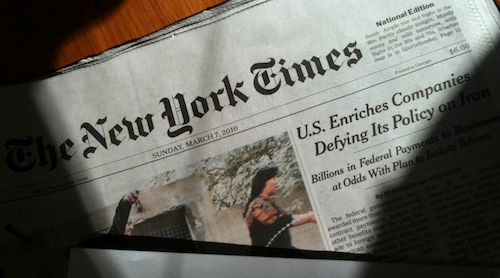 To celebrate a Sunday that showed some signs of pulling out of the greyness that this winter has been, I went out early-ish and picked up a dozen bagels and, almost as an afterthought, a six dollar copy of The New York Times, which some of you may not know is an actual newspaper, published on big ol’ soy-ink chugging presses nightly from a couple of dozen offset printing plants around the country.
To celebrate a Sunday that showed some signs of pulling out of the greyness that this winter has been, I went out early-ish and picked up a dozen bagels and, almost as an afterthought, a six dollar copy of The New York Times, which some of you may not know is an actual newspaper, published on big ol’ soy-ink chugging presses nightly from a couple of dozen offset printing plants around the country.
Yes, we bought the paper. Now, for someone who went to journalism school and contemplated life amidst the ink-stained before being seduced by the blue crackly glow of television, this may not seem that surprising. But truth is, as much as I love the idea and honor the history of newspapers, reading the news on newsprint is amazingly unsatisfying, as if I’m pawing through two-day-old printouts left in some newsroom’s recycled bin. It feels, old, stale, expired. Didn’t we see that Style section story on the web on thursday? Where are the Times blogs breathlessly updating the story of the Cablevision-Disney battle that threatened cable viewers’ view of the Oscarcast?
I’m not one who believes that when magazines and newspapers make the switch to iPad-like delivery, they should become some sort of multimedia animation-fest. in fact, I think they’ll do just fine if they avoid discarding a handful of things:
- Layout matters. Columns, headlines, callouts, color, and big photos will look superb in a tablet. You really don’t need to go much beyond the classy approach you’d see in the print Sunday Times Magazine.
- Ads in context. Part of the charm in paging through the NYT Arts and Leisure section on Sunday always was (and remains) seeing the huge ads for moveis and shows interspersed with the editorial content. Again, if they’re NOT flashfests or blink-monstrosities, they’ll get noticed and appreciated for what they are…advertising wrapped around some of the world’s most prestigious content.
- We always will welcome and find ways to pay for well-edited, carefully sourced, copyedited, and corrected content. Shovel dross at us and we won’t care how much it animates…it’ll be dead to us.
The upcoming iPadThingie can be my BBC Newspad, perfect for reading whole eating mysterious earth-tgoned puddings in zero gravity, or accompanying fresh-made bagels on an Atlanta Sunday morning.
Magic: we’ll be the judge of that.
Friday, March 5th, 2010
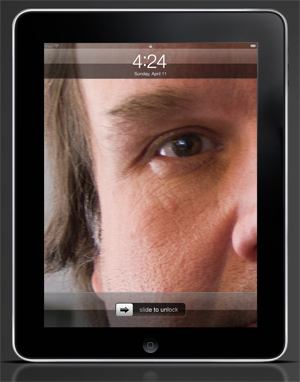 The Apple folks have announced the day-it-shall-be-buyable of the iPad, and, for the wi-fi only versions, it’s April 3rd, a mere 8 days before my birthday (in case you need any last minute gift ideas).
The Apple folks have announced the day-it-shall-be-buyable of the iPad, and, for the wi-fi only versions, it’s April 3rd, a mere 8 days before my birthday (in case you need any last minute gift ideas).
I continue to be intrigued by the paradigm-shifting possibilities of the device, especially for those out there who, truth be told, don’t really need a computer in their lives…they need a fancy doohickie that reads email and surfs the web and shows photos and plays games. For those people, if they never see a filesystem, they’re fine with that. If they never have to mess with another preference file or repair permissions, their lives will be that much better.
And I want to see as many of those folks as possible with these in their hands. But I also want this as a hackable, playable, messable-with device for folks like me, and it remains to be seen how completely this fits into that paradigm.
But there is one thing I’ve heard quite enough of. I’m looking at you, Apple marketing and PR weasels. You know that whole “magical and revolutionary product at an unbelievable price” thing you keep saying over and over and over again? The Steve Jobsian thing to do would be to put this device out there and let us be the judge of that. There’s gotta be a law somewhere where you can’t call your own innovation “magical”, and you’re violating it again and again.
Let us buy the thing and take it around the block and we’ll let you know. Even if the verdict is “yep, magical,” it’s for us to say, and you to smile and count our cash.
William Shatner stands on guard for thee.
Sunday, February 28th, 2010
Photo by Duncan Rawlinson, one of many cool ones at his ‘Last Minute Blog’.
After speeches, anthems aplenty, and flags raised, lowered, and passed along, Neil Young sang “Long May You Run”, the Olympic torch was extinguished, and with it, any air of sobriety left in Vancouver’s BC Centre.
What followed was folly: William Shatner, with a dramatic reading plus Keynote presentation on what it means to be Canadian (ien?). Catherine O’Hara, swept in by curling brooms, with comedic variations on that theme, and an apology for being apologetic. Michael J. Fox, yet another sometimes-expatriate, tugged on a heart or two.
And then came the the giant inflatable beavers, the floating mermaids with maple leaf wings, and a gigantic tabletop hockey game, batting about a small child dressed as a puck. And moose. And canoes. And, oh yeah, Michael Bublé singing some snippet of maple leaf doggerel over and over again accompanied by mountie babe backup singers…segueing into the famed Hockey Night in Canada theme.
And how did it all end?
Well, we don’t quite know, on this side of the border. At 10:30 eastern, NBC did their best attempt at self-parody: they cut away (abruptly!) from the ceremony, promising to pick up where they left off in a hour—on, yes, say it with me, tape delay. had to run that Seinfeld Marriage game show thingie, y’know.
After that odd acid trip of an experience, it’s hard to believe Seinfeld was ‘More colorful.’
Converged, 20 years on.
Thursday, February 18th, 2010
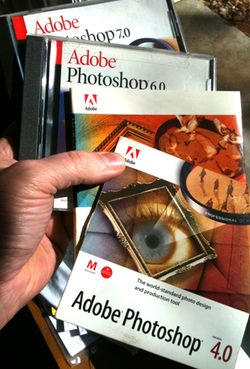 Friday, February 19th is the 20th birthday of Photoshop. Yes, the software that liberated me from paint systems that cost six figures is two decades old, and in that staggeringly long time (when you measure in ones and zeroes) has grown from a simple way to make and alter bitmapped images to a complex, multilayered, largely 3d and multiframed behemoth that has all kinds of horsepower to handle massively megapixel-y frames of stuff in lots of different formats.
Friday, February 19th is the 20th birthday of Photoshop. Yes, the software that liberated me from paint systems that cost six figures is two decades old, and in that staggeringly long time (when you measure in ones and zeroes) has grown from a simple way to make and alter bitmapped images to a complex, multilayered, largely 3d and multiframed behemoth that has all kinds of horsepower to handle massively megapixel-y frames of stuff in lots of different formats.
It also, increasingly, has the tools to help ordinary joes create retouched reality that is nearly undetectable except by those who examine their work on a fractal/pixel level.
I spoke at a SMPTE conference 20 years ago about how to use the tools of the time to work with multigenerational video to create layers of graphic design (back in a time where television’s on-air look was distinguished by a distinct lack of layering. The demo I showed used the state-of-the-then-art, a $160,000 Quantel Paintbox, to create text, color gradients, and the raw material that I would layer into multigenerational creations. And this was a device that could only work at the (amazingly low) resolution of standard definition (ah, we used to call it NTSC) television.
A month later—a month later—Photoshop was released. And yes, that changed everything.
So in 1993, I gave a talk to a bunch of NBC promo execs (back when they could have deluxe retreats and talks) about everything having been changed, and I, well, kinda geeked out about the possibilties of working with desktop systems and this cool program called Photoshop and vector files and a new compositing program called COSA After Effects. I went on at some length, and in a terrifying amount of detail, as I’ve been known to do, and, well, I suspect I baffled more than enlightened my audience, but now here we are.
Everyone knows the word Photoshop, and most use it as a generic to mean “mess with an image.” There are websites that celebrate and call out the overuse and misuse of the venerable application’s powers. There are songs—not very good ones, or I’d link to them—venerating and trashing the app.
So thanks, Knoll brothers and Adobe, for extending what was only the work of a few specialists now into the grasp of nearly anyone with a laptop in a coffeehouse. And as we sit here in the ‘now’ where fancy tablet computing thingies are about to ship that may well open up even newer digital highways for those who find computers way too computer-y and spell the sunset of some of the desktop machines we’ve delighted in for two decades, I’ll still, I suspect, be firing up the venerable program most mornings to design cool things. Or scribble, as I search for an idea.
Oh, and if you (uh, as I do) like to see computer guys who were young punks when they invented the thing get together decades later to reminisce, please enjoy John and Thomas Knoll, Russell Brown, and Steve Guttman sitting around talking.
Snow cliché 2010!
Saturday, February 13th, 2010
Run for your lives! Well, on second thought, don’t. We had four inches (expert meteorologists…top men, I tell you..told us) of frozen precipitation, which, I think in the greater country-wide scheme of things, means we got off very lucky indeed. We were able to get up to my dad’s 84th birthday yesterday through the snowy beauty with nary a skid, and when the sun rose today, it was a good time to get out and shoot a few pictures.
…and there are a few more here.
Sapelo weekend.
Tuesday, February 9th, 2010
 Back from a weekend hanging with archaeologists and looking at things archaeological down on the Georgia coast. On Sunday morning, we took a ferry over to Sapelo Island, one of Georgia’s barrier islands that has (they tell me), been intensely occupied over the centuries, from native peoples who built shell ring mounds (one 100 meters in diameter) way way back in BC sometime to the Spanish to the French to sugar cane growers who forged their operations on the backs of slave labor to the descendents of those slaves (and, along the way, a Detroit auto engineer who bought up a big chunk of the island, North Carolina tobacco emperor R.J. Reynolds who built a big old house there, and bunches of researchers, some who live on the island full-time.)
Back from a weekend hanging with archaeologists and looking at things archaeological down on the Georgia coast. On Sunday morning, we took a ferry over to Sapelo Island, one of Georgia’s barrier islands that has (they tell me), been intensely occupied over the centuries, from native peoples who built shell ring mounds (one 100 meters in diameter) way way back in BC sometime to the Spanish to the French to sugar cane growers who forged their operations on the backs of slave labor to the descendents of those slaves (and, along the way, a Detroit auto engineer who bought up a big chunk of the island, North Carolina tobacco emperor R.J. Reynolds who built a big old house there, and bunches of researchers, some who live on the island full-time.)
On the ferry over (a zippy modern catamaran named after Katie Underwood, the island’s last resident midwife), three kids from what seemed like widely variant socialeconomic backgrounds (that is, some seemed to be dirt-poor and some didn’t) nevertheless had iPhones or iPod Touches, and they and their friends exhibited the now-familiar behavior “look at this cool app! look at this picture I just took of you! listen to this song!” Modern mobile kids, doing the new social, poking, pinching, and sliding on tiny glass surfaces.
Once on the island, at least for us, it was a decidedly low-tech wander, packed into a beat-up minivan, bouncing along dirt roads with deep puddles from Friday’s rain. We did collect lots of GPS points and digital photos, and we learned about the island’s history the old-fashioned way, listening to the stories of those who had spent decades investigating the centuries of human occupation on the island.
Long may you run.
Saturday, January 23rd, 2010

Hey, I’ve been around for a while. I’ve seen Johnny Carson’s last show. Heck, I’ve seen Dick Cavett’s last show. I saw one or two of Tom Snyder’s last shows. (And I’m talking when they aired, when they were broadcast to an still fairly monolithic american tv viewing public.)
Conan O’Brien’s last Tonight Show, last night was a classy
and entirely on-key farewell.
The guy is creative, talented, smart, works hard, and seems to inspire loyalty in his colleagues and guests. You can’t ask for much more than that.
It was, in some ways, all the more compelling coming on after the, uh, George Clooney show—a prime-time two hour fundraiser for the earthquake victims in Haiti, which, aside from the considerable good charitable work, was a modern masterpiece of live television. The music, interlaced with simple, straight-to-the-camera pleas for help (delivered by a-list movie talent), seemed to be exactly what tone you’d hope would be struck after a bad couple of weeks in the world. ‘Hope for Haiti Now’ reminded me how elegant well-produced LIVE musical numbers can be when done with restraint (hey, no audience!) and style, in glorious high definition.
Me, I hope television continues to function as a common electronic hearth, every once in a while, for us all to gather in realtime and, uh, tweet about it. Last night was a good night to do both. And hey, no Jay Leno show at ten…they ran Dateline!
One chunk of Conan’s closing comments is getting a lot of note in the hours after, and deservedly so. After the comedy stylings of Steve Carrell and Tom Hanks, and after the chords of Neil Young’s “Long May You Run” (I know, eh?) and before the comedy chord stylings of Will Farrell and company performing “Free Bird”, the Host Of The Tonight Show said this:
“All I ask of you, especially young people…is one thing. Please don’t be cynical, I hate cynicism — it’s my least favorite quality and it doesn’t lead anywhere. Nobody in life gets exactly what they thought they were going to get. But if you work really hard and you’re kind, amazing things will happen. I’m telling you, amazing things will happen.”
I can’t disagree.
Almost in frame.
Friday, January 15th, 2010
I think one of the reasons I like Flickr, the photo sharing site put together by Stewart Butterfield and Caterina Fake way back in 2004 (and sold, ca-ching, to Yahoo about a year later) is that not only do I get to upload and share my photos with the greater, uh, planet, but I do so in a way that makes each picture a post of its own…each one has a headline…sometimes a caption…and tags.
And, if you so permit, folks from the greater, uh, planet can add comments and generate a bit of a dialog right there on the page about what the image holds, signifies, or conjures up in their own overactive imaginations. (The picture of J.C. Salyer at top right, where he’s almost in the frame, even netted a quick comment from cofounder Fake herself.) I’ve ‘met’ some interesting people from the comments…neighbors, and people, well, anywhere.
And as a guy who used to really enjoy writing headlines back in the days when they involved equal amounts of copyfitting and wit, I try to put the same kind of work in the photo titles (which are, after all, little headlines) as I did in taking the picture. So I cobble together odd phrases like Watch this tower grow. and Ohio occurs in various colors. and The long shutter, en fuego. and teton zombieland. and But how do they hold the pencils? and Better than ‘Sindiana’ or ‘Swest Virginia.’ and Food that pleases at 2 am.
And yes, just like here, for some reason, the periods at the end of the headlines are important to me, so don’t mess with them, OK?
Some folks who upload (sometimes hundreds of) images don’t even bother to change the title, and so have a bunch of headlines resembling “IMG2137.JPG”, and some others elect to write little haikus of poetry in the tags, like:
- cold
- frozen
- I was so cold
- brrr
…and I think all of these idiosyncracies make browsing through the 2 billion or so pictures all the more interesting.
And yes, there’s the actual photography too…the technical approaches and styles used to create Flickr images inspire imitators, trends, and way too much discussion. I don’t think it’s any coincidence that after a blizzard of uploaded tilt-shift fake photos —that’s a technique that takes the characteristic shallow depth of field you see in miniature photos…why the model railroad layout has sharp trains and fuzzy cars in the foreground—and applies that (often digitally) to real-world objects to make them look like tiny toys. Anyway, there’s an Allstate commercial out there now that uses the technique, and if it hadn’t become fashionable online, I doubt they would given it a go on Real Network Television.
So every few days I try to make sure I upload a few choice-ish pictures to le Flickr and I give my brain a little headline-writing practice and I get a small smile knowing that you there in Kuala Lampur can sit there and look at a picture of my old Apple //e or Bob Beasley operating a 1970s-era video switcher or ‘Bowling from the future!’—a bowling alley in Wapakoneta, Ohio.
13 years after hitting ‘save.’
Sunday, January 10th, 2010
Seems like it’s often in the cold of January when folks are busy resolutioning and starting with clean slates that I pull a couple of old CD backups off the shelf and ask myself “okay, how screwed am I now?”
Because things change. Operating systems change. Applications grow and evolve and the newest version of, say Adobe After Effects will not read files created by the oldest version. (This is even true of the 20 year old Adobe Photoshop, yet they’ve done a better job of most of perpetuating their file format. And some folks say that’s one of their biggest problems.)
I think this year it’s because I was reading a book I picked up on Borders’ discount table for $3.99 by computer journalist Steven Levy, called The Perfect Thing—about the development and launch—right after 9/11—of the iPod, a device that changed (say it with me): everything. (Later, I found Levy’s book for 50 cents at Amazon, but that’s neither here or there.)
So I went from iPod nostalgia—where I took out our old first-gen iPod and powered it up and verified that yep, it still plays songs and the screen still had Chicago type—to watching a couple of old Steve Jobs product introductions (“behold, the tangerine iBook!“) to looking pensively at an old After Effects 3.1 project file from 1997 (hey, not so long ago) and wondering if it would work in nice, shiny, After Effects CS4 on my nice shiny Intel iMac running Shiny..er, Snowy Leopard.
Click. Drag.

Um, no, it would not. However, the error dialog sensibly and helpfully suggested that maybe I could save it in a version of AE that was later than AE 3.1 and earlier than the current one.
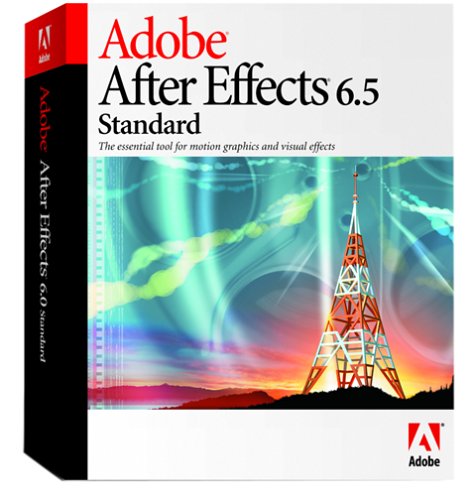 Turns out, the ideal middleman for that is After Effects 6.5 and because, yeah, I have a drawer full of old Adobe disks, I could install it…except, hm, there’s no way it’ll run on Snow Leopard on an Intel machine. And certainly not one running full 64 bit. Well, okay, I need a PowerPC machine running Tiger (Mac OS 10.4). Fortunately, my sister-in-law’s Titanium laptop was recently retired and sits here awaiting a good retirement-home (one where it can be babied and always plugged in)…and sure enough, AE 6.5 installs and runs on that system like a champ, and I was able to open and save the project file and send it over to my modern iMac and ta-da! It opened in After Effects CS4.
Turns out, the ideal middleman for that is After Effects 6.5 and because, yeah, I have a drawer full of old Adobe disks, I could install it…except, hm, there’s no way it’ll run on Snow Leopard on an Intel machine. And certainly not one running full 64 bit. Well, okay, I need a PowerPC machine running Tiger (Mac OS 10.4). Fortunately, my sister-in-law’s Titanium laptop was recently retired and sits here awaiting a good retirement-home (one where it can be babied and always plugged in)…and sure enough, AE 6.5 installs and runs on that system like a champ, and I was able to open and save the project file and send it over to my modern iMac and ta-da! It opened in After Effects CS4.
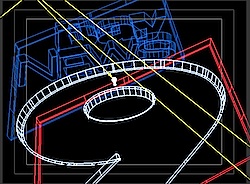 Except most of the footage was missing (okay, I could find much of it on other CD backups) and some of that footage used an obsolete Quicktime codec that only runs on old PowerPC machines running 10.4 Tiger or so and…well…short story, the Titanium was able to transcode that video, one clip at a time, into the modern Apple ProRes codec that I would have killed to have worked with back in 1997.
Except most of the footage was missing (okay, I could find much of it on other CD backups) and some of that footage used an obsolete Quicktime codec that only runs on old PowerPC machines running 10.4 Tiger or so and…well…short story, the Titanium was able to transcode that video, one clip at a time, into the modern Apple ProRes codec that I would have killed to have worked with back in 1997.
And then there was a 3D move for which I had the Electric Image project file, and because the version of Electric Image (a 3d rendering program from the dawn of computer time) I have is indeed ancient and yet still runs (in Rosetta) even on Snow Leopard (!!) I was able to open up the project file and rerender the 3d move in what seems like a tiny fraction of the original time.
And so finally, there was my project, right exactly where I left it back in 1997, down to the last kerned character and reflected highlight, running on a modern 64 bit machine.
Moral: keep a PowerPC Mac alive—if on life support—running 10.4. Well, that’s not the only way to have done it, but it’s certainly one path to backward compatibility. And why is backward compatibility at all important? (I mean, it’s not like Time Warner’s gonna call me up now and say we need you to do that Bay News 9 project again. For one thing, they don’t even own Bay News 9 anymore.)
So why go to this Rube Goldbergian trouble? I guess I just think there’s something sacred about hitting ‘save’ on a project or on image and any sort of computer file and having the confidence that 15 or 20 years later, I can still read that file. Or I can go through some process to rehydrate it and breathe life into it. It seems important. And, it seems, it’s not a process that happens easily unless you stay on top of what is compatible with what—which certainly can be a full-time job.
Otherwise, what does ‘save’ mean, exactly?
Cable math.
Monday, January 4th, 2010
While I was busy playing around making cool graphics for the nascent WTBS/WTCG, I often overheard the suits in the hallways on West Peachtree Street talking per-sub rates…the money cable companies were willing to pay per subscriber, per month, to cablecast the SuperStation (ask for it by name!) These were negotiated, of course, and back when there were hundreds (thousands?) of independent cable companies it was quite a process…and the deals seemed to rely on schmoozing and wheedling as much as on plain old marketing.
CNN’s price per sub, according to a 1984 New York magazine article, was, back in those olden times, between 15 and 22 cents per sub, although Ted Turner cut the subscription price (the article says) to as little as 3 cents per to get the cable operators to start carrying CNN.
Now, large mega cable companies like Time Warner, Comcast, Cox, and Charter negotiate (and wheedle) with large mega content providers like Fox, Scripps, Viacom, Disney, and, uh, Time Warner and Comcast/NBC/Universal, eventually. It’s fewer entities talking to fewer entities and therefore the negotiations take on a more apocalyptic tone—when millions of cable homes are at stake at once. Then, they sit down, add all these fees up, and pass a hefty cable increase on to you.
In this morning’s Times, Brian Stelter does the modern math and the range and imbalance of the numbers surprises me: Food Network averages 8 cents (Scripps, the network’s owner wants a raise up to closer to 25 cents per month) and ESPN gets $4.10!?
This is, of course, why many cable companies (and content providers) fear a no longer so hypothetical future world where people get their content a la carte. At our house, we’d probably pay more for the Food Network and none at all for ESPN.
Hand me a tablet to figure it out….actually, I mean hand me the mythical end-of-January Apple tablet and let’s see if that device coupled with an iTunes-like TV-type entertainment-like system behind it can create a world where we can easily duct tape together the entertainment we want and avoid paying for the stuff we, well, avoid.
It’s what’s causing of the content providers and resellers to do some new (year’s) new math of their own.
Hip to be (a) square (bar code.)
Monday, December 28th, 2009

So you take your fancy iPhone app, like this one, and point it at the screen here, and darned if it doesn’t read this fancy QR Code (ah, so that’s what these square-ish barcodes are called) and ka-whamo, it reads the URL I’ve encoded into this collection of blotches, and darned if it doesn’t read…well, the site you’re already looking at now. Hey, impressive!
(By the way, these QR codes are way more readable when blurry, tilted, or seen in a dark place than, say, the UPC Codes—aka ‘bar codes’—we know and love. I just get my iPhone within the tristate area of the screen and WHAM!—it’s read.)
Apparently Google not only generates these codes from their Chart API (a fancy programming interface to create charts online) but they’ve distributed zillions of stickers for real-world locations (you know, bars, stores, coffee shops) that rumor has it can be used for anything from coupons to meetups to Orwellian scariness to…well, dunno.
None of that here. This is just barcode as decor. Enjoy! Buh…leep!
Gotham snaps.
Wednesday, December 23rd, 2009
I had a quick day-trip to New York last Friday for a business meeting and it was sunny (but jeez-o-petes cold by Southern standards). I bought a one-day unlimited-ride MetroCard at LaGuardia and let my trusty iPhone (with some judicious power management) lead me through buses and subways to some photographable sites. It was the kind of day where the city just looked nice…so I took advantage of that, grabbing pixels hither and yon…through two Apple stores, several seats of broadcasting, quite a few subway stations, the new-ish High Line park down by Chelsea Market, and finally, at Grand Central where I hopped a Metro-North train to get out of the city for an early, early flight home—just ahead of the snows that dumped on the east coast.
So I’ve uploaded a selection of the images to this Flickr photo set, and I’m sharing them with you.



